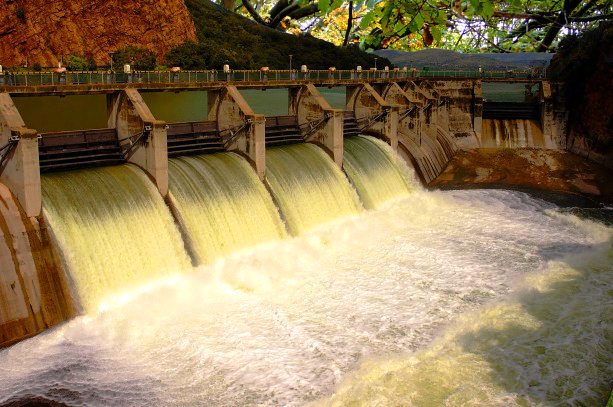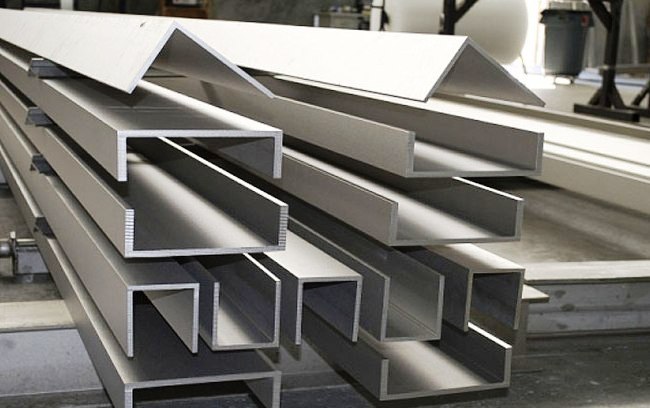How to Build a Dam

A dam is a building that is typically constructed to span a river or stream and create a sizable reservoir behind it. Dams are used by humans for many different things, including irrigation, hydroelectric power generation, peak floodwater reduction, and enhanced navigation.
Additional features on dams include movable gates, spillways, and valves that regulate the flow of water downstream. In order to transport water to far-off locations, they are occasionally connected to intake structures like canals, rivers, and pipelines.
Engineers classify dams into various groups based on the type of structure, application, and building materials. The various kinds of dams and their applications will be covered in this article.
The Dam Types
Dams are categorized into various types based on their intended uses, structural designs, and building materials. The foundation conditions, the dam site’s accessibility to transportation networks, the availability of building supplies, and the availability of funding all play a role in the choice of dam type.
The most typical types of dams used in construction are listed below.
Arch Dam
A concrete dam with an arch-shaped curvature is called an arch dam. The section that curves back toward the water. The water pressure exerted on the arch causes it to slightly straighten, strengthening the structure as it pushes back its abutments and foundations.
The ideal locations for arch dams to withstand the stresses on the structure are small gorges and canyons. Arch dams typically use less material during construction because they are thinner than other types of dams. Arch dams have less issues with uplift pressure because of their narrow base width, which transfers very little of the water load to the foundation.
Arch dams are labor-intensive to build and typically take longer to complete. They also require robust, thrust-resistant abutments.
Arch dams are divided into three categories: constant angle, variable radius, and constant radius.
The upstream face’s radius varies in a variable arch dam, the constant angle arch dam is a special variation of a variable radius dam, and the radius of the arch in a constant radius arch dam is continuous in both the upstream and downstream faces. On the upstream face, it has various horizontal arch rings, but regardless of elevation, all of these rings originate from the same central angle and have the same magnitude.
Buttress Dam
Another name for a buttress dam is a hollow dam. Buttress dams are built using a similar concept to gravity dams, but with a far smaller material requirement. The wall of the buttress dam may be straight or curved.
The dam’s stressed sections are supported by buttresses on the downstream side. In order to withstand the force of water attempting to topple the dam, the buttresses are evenly spaced.
Buttress dams come in five different varieties. These include the massive head, columnar, multiple arch, deck slab, and multiple dome buttress dam.
Buttress dams can be built on comparatively flimsy foundations and don’t have any issues with foundation drainage or uplift. Because the uplift pressure on a buttress dam is significantly lower than that of gravity dams, buttress dams are more cost-effective. To reduce construction costs, powerhouses and switchyards can also be positioned in between the buttresses.
The Cofferdam
A cofferdam is a makeshift building that facilitates the process of damming, dewatering, or water diversion in a confined space. Pumping out water through the construction of a watertight enclosure enables work to continue in a dry and safe environment.
Cofferdams are used in the construction and repair of piers, bridges, and oil platforms situated in water.
Cofferdams are created by driving steel sheet piles together to create a waterproof bed. They can withstand extremely high pressure. The cofferdam walls must be strong enough to withstand the horizontal forces exerted by the nearby water. The type of soil, the working area, the required cofferdam depth, and variations in water levels all influence the shape and design of cofferdams.
Usually, cofferdams are taken down once construction is finished.
The Detention Dam
A detention dam’s main objective is to control the flow rate and lessen the effects of flooding in a water channel. Detention dams are occasionally built with the additional purpose of recharging groundwater systems or retaining silt.
For the purposes of irrigation, livestock, hydroelectricity, municipal water supply, and recreation, detention dams hold water for extended periods of time. Detention dams are constructed in areas higher than the flood area in areas that are prone to flooding. After building up in the basin above, the water is gradually released at a pace that the channels and flood zones can handle.
Overtopping, in which the water level in the dam rises above the dam’s crest height, is the main risk associated with detention dams. Overtopping is a risk that designs must take into consideration because it can seriously damage the dam structure.
The Diversion Dam
Water can be redirected from its natural course using a diversion dam. The water that has been diverted is mostly used to fill reservoirs and irrigation systems. Unlike other dams, detention dams typically divert water through drain pipes, canals, or dikes instead of impounding it.
In order to facilitate the easier diversion of a watercourse downstream, some diversion dams are constructed to catch surface runoff and trap sediments.
Embankment Dam
Industrial wastes or excavated building materials are used to build embankment dams. After that, the components are compacted to create a wall with different soil compositions. Because of the dam’s semi-impervious nature, seepage erosion is avoided. Particles are bound together by material interaction and friction to form a stable mass.
There are two types of embankment dams: those filled with rock and those filled with earth. To stop water from leaking through, the center of embankment dams is filled with an impermeable substance like clay or concrete. Dams with embankments are a wise option, particularly for locations with wide valleys.
These dams are relatively simple to build, use materials that are readily available locally, and have a high resistance to ground movement and settling.
Gravity Dam
A gravity dam is a large, self-weighing concrete or masonry dam intended to withstand the weight of flowing water. Every section of a gravity dam is stable and stands alone from the others.
For these dams to limit the force that the water will ultimately exert, they require stiff foundations with high bearing strength. To make sure the soil can support the weight of the dam and the water, it is best to test the bearing capacity of the soil the foundation is built upon.
However, when there is a differential settlement, gravity dams are more likely to fracture because of their stiffness. Additionally, because of their large footprint, gravity dams are vulnerable to uplift pressures that could cause the dam to collapse.
Because the concrete in gravity dams is scour-resistant, they can withstand small overtopping flows, unlike embankment dams.
Storage Dam
Storage dams are built to collect and hold water for use by livestock in the dry season, particularly during rainy seasons. Storage dams are also used for irrigation, hydroelectric power, and municipal water supply. These dam types are the most prevalent ones.
Additionally, there are unusual storage dams to catch sand and debris. Dams for storing sand are constructed gradually over a stream in phases. Given that they let water wash over their crests, they must be sufficiently strong. Sand accumulates behind the dam over time in layers that help retain water and stop evaporation. The water can then be removed using a well, drainpipe, or the dam body.
The Way a Dam Is Built
Amazing works of engineering, dams store enormous volumes of water for use in recreation, hydroelectric power production, and flood control. But this raises the question of how dams are constructed.
The process of building a dam is intricate and requires a large workforce as well as a lot of raw materials and resources. The procedures required for building a dam are listed below.
- Water diversion: The section of the river where the dam will be constructed must be dewatered first. Tunnels are used by engineers to divert water in this way. The tunnels must be sufficiently deep to transport water without causing surface runoff. The river just needs to be made shallow enough to work in; emptying it is not necessary.
- Laying the foundation for the dam: If the water in the river has not been sufficiently diverted, a cofferdam needs to be built to assist in directing the water to the tunnel. To create a solid foundation bed, stack the heaviest rocks first, followed by progressively smaller rocks.
- Put the main structure together: Make sure the riverbed is free of loose rock, and build a plinth—a concrete foundation—to stop water from seeping over the dam’s edges. The actual construction of the dam, which entails building your main structure on both sides of the foundation, comes next. In order to make dams resistant to water flow, reinforced concrete steel is typically used in construction projects.
- Filling the reservoir: The reservoir needs to be filled after the dam has been built to the appropriate height. Next, you must check to see if the floodgates and valves operate and keep an eye on the newly constructed dam’s behavior.
Overview
You now know the different kinds of dams that are available and how to build one. Dams can be used for irrigation, industry, and residential use. In addition to being utilized for hydroelectric power and navigation, dams are considered an example of human ingenuity.

